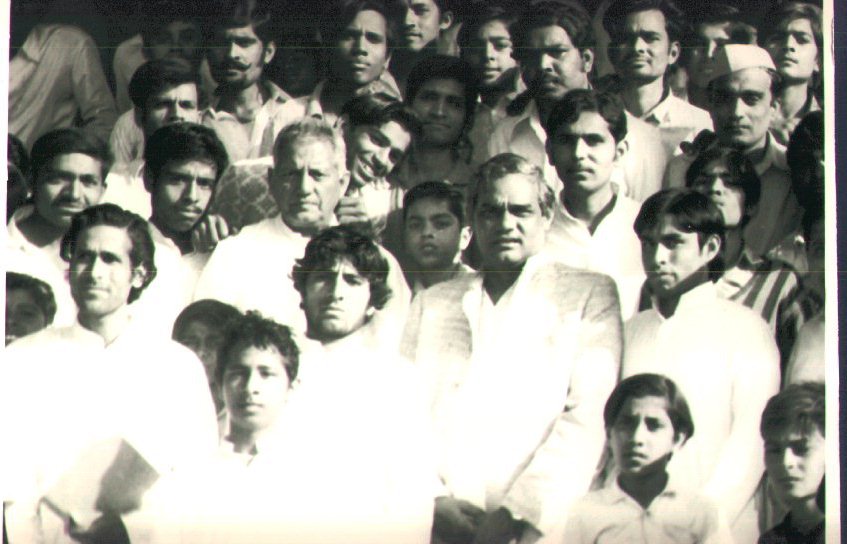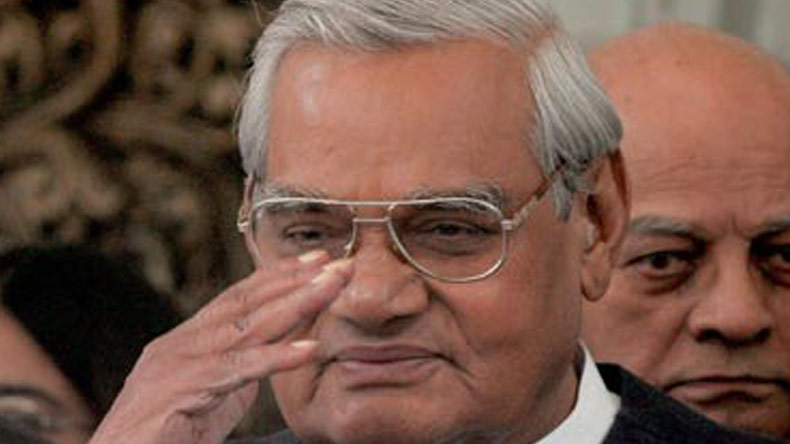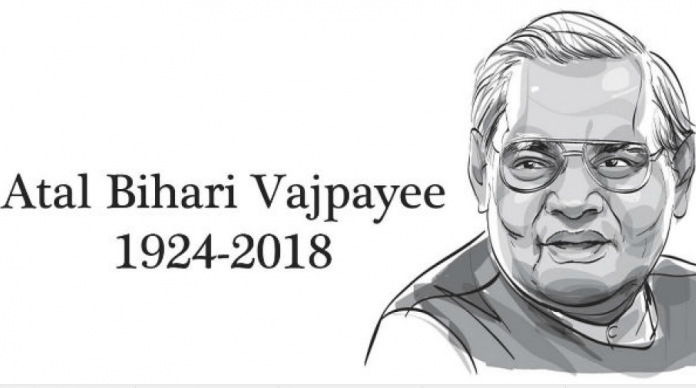Atal Bihari Vajpayee (25 December 1924 – 16 August 2018) was a notorious pioneer of the Bharatiya Janata Party (BJP), known for his social balance, progressivism and political sensibility. He turned into the Prime Minister of India thrice – first in 1996 when he served the term for 13 days, second in 1998 for a time of eleven months, and third time in 1999 for a full term of five years. His administration has been till date the main non-Congress government to remain in control for a long time. Other than being a prepared legislator and exceptional parliamentarian, Atal Bihari Vajpayee was additionally a prestigious artist and a profoundly famous identity over the political range.
The Modi Government has proclaimed his birthday i.e. 25 December to be praised as Good Governance Day. Vajpayee passed on 16tth August 2018 because of delayed ailment.
Early life

Atal Bihari Vajpayee was conceived in a white collar class Brahmin family to Krishna Devi and Krishna Bihari Vajpayee on 25 December 1924 in Gwalior (Madhya Pradesh). His dad was an artist and a teacher. Vajpayee did his tutoring from the Saraswati Shishu Mandir, Gwalior. It was at Dayanand Anglo-Vedic College, Kanpur that Vajpayee finished his post-graduation in Political Science.
Joining as the Rashtriya Swayamsevak Sangh (RSS) specialist in 1939, Vajpayee turned into a pracharak (all day laborer) in 1947. He additionally worked for Rashtradharma Hindi month to month, Panchjanya Hindi week by week and the dailies Swadesh and Veer Arjun.
Vajpayee stayed single man for whole life. He received the little girl of long-term companion Rajkumari Kaul and BN Kaul and raised her as his own kid.
Political Career

Atal Bihari Vajpayee started his vocation in governmental issues as an opportunity contender. He ended up the national secretary of BJS accountable for the Northern area.
He rose to wind up the national leader of the Jana Sangh in 1968. Upheld by his associates Nanaji Deshmukh, Balraj Madhok and L K Advani, Vajpayee took the Jana Sangh to more noteworthy brilliance.
Atal Bihari Vajpayee took part in the Total Revolution development propelled by Jayaprakash Narayan (JP) against the Internal Emergency forced by then head administrator Indira Gandhi in 1975. In 1977, Jana Sangh turned into a piece of the Janata Party, the fantastic organization together against the Indira Gandhi government.
He turned into the Minister of External Affairs in a bureau of Morarji Desai. As outside pastor, Vajpayee turned into the main individual to convey a discourse at the United Nations General Assembly in Hindi. His profession as a priest was brief as he surrendered from his post following the renunciation of Morarji Desai in 1979. Be that as it may, by at that point, Vajpayee had built up himself as a political pioneer.
The BJP won two parliamentary seats in the 1984 decisions. Vajpayee worked as BJP President and Leader of the Opposition in the Parliament. Known for his liberal perspectives, Vajpayee moaned about the decimation of the Babri Mosque on 6 December 1992 and pronounced it as the BJP’s “most exceedingly bad erroneous conclusion”.
As Prime Minister of India

By 1984 decisions, the BJP had built up itself as an imperative political gathering in Indian governmental issues. Vajpayee was confirmed as the tenth Prime Minister of India following the 1996 General Elections, where the BJP developed as the single biggest gathering in the Lok Sabha. In any case, the administration fallen after just 13 days after his legislature couldn’t assemble bolster from different gatherings to acquire a dominant part. He hence turned into the briefest serving Prime Minister in India.
The BJP-drove coalition government returned to control as the National Democratic Alliance (NDA) in 1998.
Be that as it may, Pakistan dumped India by propelling Kargil War, wherein Pakistani troopers penetrated into the Kashmir Valley and caught fringe ridges around the town of Kargil.
Indian armed force units, under Operation Vijay, battled Pakistani gatecrashers overcoming substantial big guns shelling in the midst of to a great degree cool climate, and deceptive sloping territory, and eventually rose successfully.
In the accompanying race, be that as it may, the NDA returned with full larger part and Vajpayee could finish five years (1999-2004) in office as a non-Congress PM out of the blue. Atal Bihari Vajpayee accepting promise as Prime Minister of India for the third time on 13 October 1999.
The legislature needed to discharge fear psychological militants including Maulana Masood Azhar from jail to anchor the opportunity of travelers. It likewise attempted National Highway Development Projects and Pradhan Mantri Gram Sadak Yojana. Vajpayee embraced expert business, free-showcase changes the way to deal with help India’s financial improvement.
In March 2000, Vajpayee marked the Historic Vision Document amid the visit of the then US President Bill Clinton. The Declaration consolidated a few key issues, aside from contributing for development exchange and monetary ties between the two nations.
Atal Bihari Vajpayee again strove for peace with Pakistan amid the Agra summit with the then Pakistan President Pervez Musharraf, however, the discussions neglected to accomplish any leap forward as Musharraf declined to leave aside the Kashmir issue.
The Atal Bihari Vajpayee administration likewise saw an assault on Indian Parliament on 13 December 2001, when Pakistan-bolstered psychological militants raged the Parliament working in Delhi.
Vajpayee as PM was tormented when public mobs broke out in Gujarat in 2002 after the Godhra prepare disaster.
Retirement
The 2004 General Election realized the defeat of the NDA, which lost a large portion of its seats and the Congress-drove United Progressive Alliance (UPA) expected the reins of intensity.
Passing
Vajpayee had real medical problems subsequent to agony a stroke in 2009 which hindered his discourse capacities. From that point forward he wellbeing turn into a noteworthy issue of concern. Afterward, he got limited to a wheelchair and neglected to perceive individuals. Bajpayee additionally experienced diabetes and dementia. On 11 June 2018, his wellbeing conditions began deteriorating and he got admitted to AIIMS, Delhi in basic condition. In the wake of residual conceded for more than 2 months, Vajpayee passed on sixteenth August 2018 at 5:05 pm because of delayed disease.
Honors and Achievements
Executive Narendra Modi and Foreign Minister Sushma Swaraj (far right) hand over the Liberation War honor to
D. Lit. from Kanpur University in 1993
Lokmanya Tilak Award in 1994
Best Parliamentarian Award in 1994
Bharat Ratna Pandit Govind Vallabh Pant Award in 1994
Bharat Ratna in 2015
Freedom War grant (Bangladesh Muktijuddho Sanmanona) in 2015
